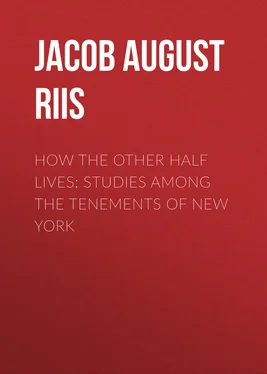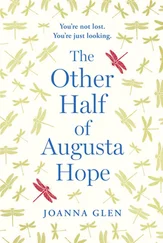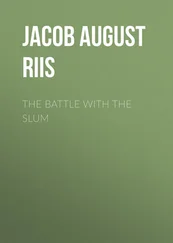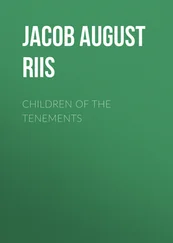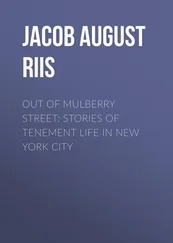Jacob August Riis - How the Other Half Lives - Studies Among the Tenements of New York
Здесь есть возможность читать онлайн «Jacob August Riis - How the Other Half Lives - Studies Among the Tenements of New York» — ознакомительный отрывок электронной книги совершенно бесплатно, а после прочтения отрывка купить полную версию. В некоторых случаях можно слушать аудио, скачать через торрент в формате fb2 и присутствует краткое содержание. Жанр: foreign_prose, sociology_book, foreign_antique, на английском языке. Описание произведения, (предисловие) а так же отзывы посетителей доступны на портале библиотеки ЛибКат.
- Название:How the Other Half Lives: Studies Among the Tenements of New York
- Автор:
- Жанр:
- Год:неизвестен
- ISBN:нет данных
- Рейтинг книги:3 / 5. Голосов: 1
-
Избранное:Добавить в избранное
- Отзывы:
-
Ваша оценка:
- 60
- 1
- 2
- 3
- 4
- 5
How the Other Half Lives: Studies Among the Tenements of New York: краткое содержание, описание и аннотация
Предлагаем к чтению аннотацию, описание, краткое содержание или предисловие (зависит от того, что написал сам автор книги «How the Other Half Lives: Studies Among the Tenements of New York»). Если вы не нашли необходимую информацию о книге — напишите в комментариях, мы постараемся отыскать её.
How the Other Half Lives: Studies Among the Tenements of New York — читать онлайн ознакомительный отрывок
Ниже представлен текст книги, разбитый по страницам. Система сохранения места последней прочитанной страницы, позволяет с удобством читать онлайн бесплатно книгу «How the Other Half Lives: Studies Among the Tenements of New York», без необходимости каждый раз заново искать на чём Вы остановились. Поставьте закладку, и сможете в любой момент перейти на страницу, на которой закончили чтение.
Интервал:
Закладка:
Jacob A. Riis
How the Other Half Lives: Studies Among the Tenements of New York

GOTHAM COURT.
PREFACE
The belief that every man’s experience ought to be worth something to the community from which he drew it, no matter what that experience may be, so long as it was gleaned along the line of some decent, honest work, made me begin this book. With the result before him, the reader can judge for himself now whether or not I was right. Right or wrong, the many and exacting duties of a newspaper man’s life would hardly have allowed me to bring it to an end but for frequent friendly lifts given me by willing hands. To the President of the Board of Health, Mr. Charles G. Wilson, and to Chief Inspector Byrnes of the Police Force I am indebted for much kindness. The patient friendship of Dr. Roger S. Tracy, the Registrar of Vital Statistics, has done for me what I never could have done for myself; for I know nothing of tables, statistics and percentages, while there is nothing about them that he does not know. Most of all, I owe in this, as in all things else, to the womanly sympathy and the loving companionship of my dear wife, ever my chief helper, my wisest counsellor, and my gentlest critic.
J. A. R.“With gates of silver and bars of gold
Ye have fenced my sheep from their father’s fold;
I have heard the dropping of their tears
In heaven these eighteen hundred years.”
“O Lord and Master, not ours the guilt,
We build but as our fathers built;
Behold thine images, how they stand,
Sovereign and sole, through all our land.”
Then Christ sought out an artisan,
A low-browed, stunted, haggard man,
And a motherless girl, whose fingers thin
Pushed from her faintly want and sin.
These set he in the midst of them,
And as they drew back their garment-hem,
For fear of defilement, “Lo, here,” said he,
“The images ye have made of me!”
INTRODUCTION
Long ago it was said that “one half of the world does not know how the other half lives.” That was true then. It did not know because it did not care. The half that was on top cared little for the struggles, and less for the fate of those who were underneath, so long as it was able to hold them there and keep its own seat. There came a time when the discomfort and crowding below were so great, and the consequent upheavals so violent, that it was no longer an easy thing to do, and then the upper half fell to inquiring what was the matter. Information on the subject has been accumulating rapidly since, and the whole world has had its hands full answering for its old ignorance.
In New York, the youngest of the world’s great cities, that time came later than elsewhere, because the crowding had not been so great. There were those who believed that it would never come; but their hopes were vain. Greed and reckless selfishness wrought like results here as in the cities of older lands. “When the great riot occurred in 1863,” so reads the testimony of the Secretary of the Prison Association of New York before a legislative committee appointed to investigate causes of the increase of crime in the State twenty-five years ago, “every hiding-place and nursery of crime discovered itself by immediate and active participation in the operations of the mob. Those very places and domiciles, and all that are like them, are to-day nurseries of crime, and of the vices and disorderly courses which lead to crime. By far the largest part—eighty per cent. at least—of crimes against property and against the person are perpetrated by individuals who have either lost connection with home life, or never had any, or whose homes had ceased to be sufficiently separate, decent, and desirable to afford what are regarded as ordinary wholesome influences of home and family .... The younger criminals seem to come almost exclusively from the worst tenement house districts, that is, when traced back to the very places where they had their homes in the city here.” Of one thing New York made sure at that early stage of the inquiry: the boundary line of the Other Half lies through the tenements.
It is ten years and over, now, since that line divided New York’s population evenly. To-day three-fourths of its people live in the tenements, and the nineteenth century drift of the population to the cities is sending ever-increasing multitudes to crowd them. The fifteen thousand tenant houses that were the despair of the sanitarian in the past generation have swelled into thirty-seven thousand, and more than twelve hundred thousand persons call them home. The one way out he saw—rapid transit to the suburbs—has brought no relief. We know now that there is no way out; that the ‘system’ that was the evil offspring of public neglect and private greed has come to stay, a storm-centre forever of our civilization. Nothing is left but to make the best of a bad bargain.
What the tenements are and how they grow to what they are, we shall see hereafter. The story is dark enough, drawn from the plain public records, to send a chill to any heart. If it shall appear that the sufferings and the sins of the “other half,” and the evil they breed, are but as a just punishment upon the community that gave it no other choice, it will be because that is the truth. The boundary line lies there because, while the forces for good on one side vastly outweigh the bad—it were not well otherwise—in the tenements all the influences make for evil; because they are the hot-beds of the epidemics that carry death to rich and poor alike; the nurseries of pauperism and crime that fill our jails and police courts; that throw off a scum of forty thousand human wrecks to the island asylums and workhouses year by year; that turned out in the last eight years a round half million beggars to prey upon our charities; that maintain a standing army of ten thousand tramps with all that that implies; because, above all, they touch the family life with deadly moral contagion. This is their worst crime, inseparable from the system. That we have to own it the child of our own wrong does not excuse it, even though it gives it claim upon our utmost patience and tenderest charity.
What are you going to do about it? is the question of to-day. It was asked once of our city in taunting defiance by a band of political cutthroats, the legitimate outgrowth of life on the tenement-house level. 1 1 Tweed was born and bred in a Fourth Ward tenement.
Law and order found the answer then and prevailed. With our enormously swelling population held in this galling bondage, will that answer always be given? It will depend on how fully the situation that prompted the challenge is grasped. Forty per cent. of the distress among the poor, said a recent official report, is due to drunkenness. But the first legislative committee ever appointed to probe this sore went deeper down and uncovered its roots. The “conclusion forced itself upon it that certain conditions and associations of human life and habitation are the prolific parents of corresponding habits and morals,” and it recommended “the prevention of drunkenness by providing for every man a clean and comfortable home.” Years after, a sanitary inquiry brought to light the fact that“more than one-half of the tenements with two-thirds of their population were held by owners who made the keeping of them a business, generally a speculation . The owner was seeking a certain percentage on his outlay, and that percentage very rarely fell below fifteen per cent., and frequently exceeded thirty. 2 2 Forty per cent. was declared by witnesses before a Senate Committee to be a fair average interest on tenement property. Instances were given of its being one hundred per cent. and over.
Интервал:
Закладка:
Похожие книги на «How the Other Half Lives: Studies Among the Tenements of New York»
Представляем Вашему вниманию похожие книги на «How the Other Half Lives: Studies Among the Tenements of New York» списком для выбора. Мы отобрали схожую по названию и смыслу литературу в надежде предоставить читателям больше вариантов отыскать новые, интересные, ещё непрочитанные произведения.
Обсуждение, отзывы о книге «How the Other Half Lives: Studies Among the Tenements of New York» и просто собственные мнения читателей. Оставьте ваши комментарии, напишите, что Вы думаете о произведении, его смысле или главных героях. Укажите что конкретно понравилось, а что нет, и почему Вы так считаете.
